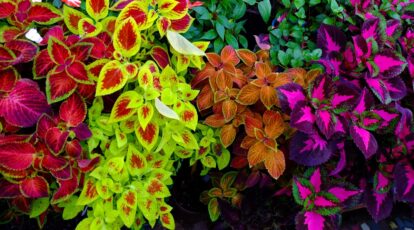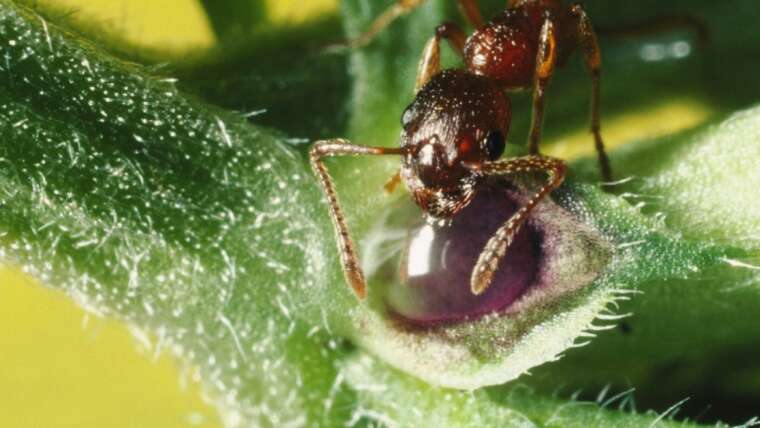Plant-shaking is trendy, but what does it do for the plant? Houseplant lovers and gardening enthusiasts try this technique to make their plants grow and produce more.
While it may seem like an all too convenient internet hack, there is some background logic that warrants giving your plant a friendly shake now and again.
Like most methods, too much of a good thing can turn bad. Some plants don’t benefit from being shaken and become damaged if you overdo it. If done right, this method has positive side effects.
Let’s look at why plant parents are shaking hands with their plants and how to incorporate it into your plant care routine!
What is Plant-Shaking?
There are several different methods to gently shake your plants.
Plant-shaking comes in many forms: a gentle grab-and-shake, a firm tap, or gentle vibration using a tool like an electric toothbrush. Or, if you’re my great aunt, you forget the gentleness and take a fly swatter to your tomatoes! (Which I don’t recommend, by the way.)
The trend comes from good intentions. It’s supposed to do one of two things: stimulate growth and strength, or help with pollination to increase fruit production.
When they don’t have access to wind, shaking indoor plants simulates the breeze. Similarly, you can shake seedlings to prepare them for the winds they’ll encounter outside.
Plant-shaking isn’t necessary, and its benefits are debated. However, there’s scientific data to back up the claims that it can promote plant strength.
Shaking causes stress, but not necessarily in a bad way. Think about weeds and grasses growing in a field in the windy plains.
They’re subjected to high winds that cause stress but result in a robust plant adapted to those conditions. If those same grasses were raised indoors under a grow light, they wouldn’t be able to handle the wind.
How to Properly Shake Your Plants
 Extreme shaking can lead to broken stems or create a stress response.
Extreme shaking can lead to broken stems or create a stress response.
If you want to shake up your gardening routine, be gentle. Never shake your plants vigorously, as the sharp movement could bend or break leaves and branches. Handle mature plants and seedlings carefully so you don’t accidentally damage them.
The best way to shake your plants is to grab the main stem or trunk of the plant and give it a jiggle. It should sway back and forth rather than vibrate. Do it for two minutes or less since it doesn’t take much to trigger their stress response.
You can also shake their container, which might be better for tender varieties. I shake my tomato cages because it moves the entire plant with less effort.
Shaking can also include tapping, rubbing, and other kinds of movement. If you dust your houseplants, this can count as their daily dose of shaking.
Even turning a fan on your houseplants can provide enough movement. A light breeze across your plants simulates outdoor wind conditions and can be plenty!
Why You Should Shake Your Plants
 There are many benefits to shaking your plants.
There are many benefits to shaking your plants.
Plenty of arguments can be made for shaking your plants. If you do it carefully and aren’t too rough, many benefits can come from it.
Make Indoor Plants Stronger
 Different methods are used for different plants.
Different methods are used for different plants.
Indoor plants aren’t usually exposed to wind, so they’re likely weaker than those grown outdoors.
Not every houseplant needs shaking. One that’s notorious for liking a good shake is the fiddle leaf fig. It becomes weaker as it grows taller, so vibration helps it gain strength.
Seedlings started indoors will also benefit from being shaken, especially if they have no wind access. Run your hand over the seedlings a few times to expose them to movement. If you plan to transplant seedlings outdoors, harden them off to habituate them to the wind.
Pollinating Perfect Flowers
 Some plants can self-pollinate. A little shake helps move this process along.
Some plants can self-pollinate. A little shake helps move this process along.
A perfect flower is “monoecious,” meaning it has both male (stamen and anthers) and female (style and stigma) parts in them. This means you don’t have to identify male and female flowers, so hand-pollinating them is as easy as shaking them. When you shake them, pollen falls from the anther to the stigma.
Tomatoes and peppers have monoecious flowers. I shake those plants to help them pollinate, and I even grew and harvested pepper plants in my house thanks to shaking!
Pumpkins and cucumbers are dioecious, meaning they have male and female flowers; they can also be hand pollinated, but shaking won’t be enough. Be sure to pay attention to whether your plants are monoecious or dioecious before you shake to pollinate!
Bigger Fruits
 Shaking fruit trees have been know to yield larger fruit.
Shaking fruit trees have been know to yield larger fruit.
Pollen and fruit size are closely related. The amount of pollen that lands on the stigma will determine the fruit size. The more pollen, the merrier!
If you shake to get larger fruit, an “up close and personal” method like an electric toothbrush is best. The quick movements of vibrations knock more pollen loose but aren’t violent enough to harm the plant.
Not Enough Pollinators
 It may be necessary to shake the plant to mimic the pollination process.
It may be necessary to shake the plant to mimic the pollination process.
Shaking may be necessary if you aren’t getting any pollinators. If perfect flowers are healthy but aren’t producing fruit, you might have a pollinator problem.
Shaking may help you produce the fruit you want to grow if that’s the case. (Plant some flowers to attract pollinators in the meantime!)
When You Shouldn’t Shake
 There are several situations when it’s not beneficial to shake your plants.
There are several situations when it’s not beneficial to shake your plants.
Sometimes, plant-shaking isn’t a good idea. There are a few instances when you can forgo shaking and let nature take care of itself.
Weak Plants
 Plants that are too small can be damaged in the process of shaking.
Plants that are too small can be damaged in the process of shaking.
Plant-shaking is supposed to build resilience, but fragile varieties may not have the strength to tolerate the movement.
Fragile indoor plants or weak seedlings may be damaged rather than receive benefits from shaking. Work on improving the health of these plants before you start shaking them.
Imperfect Flowers
 Plants with male and female flowers will do better with nature’s pollinators.
Plants with male and female flowers will do better with nature’s pollinators.
Species with separate male and female flowers don’t require shaking. They are better off pollinated by bees and other insects or with a paintbrush.
Shaking won’t accomplish anything unless the male flower is right over the female flower and they’re facing each other just right.
Plenty of Pollinators
 Bees and butterflies in your garden are a good indication that your pollination process is doing just fine.
Bees and butterflies in your garden are a good indication that your pollination process is doing just fine.
If your garden isn’t hurting for pollinators, there’s no need to try shaking. You’ll know you have enough pollinators when you see them buzzing around, and your plants regularly produce fruit.
You won’t need to shake outdoor plants if you live in a windy area. The wind will handle it for you!
How to Know If Plant-Shaking Is Working
 You will know your shaking efforts are working when you see those big beautiful hanging fruit!
You will know your shaking efforts are working when you see those big beautiful hanging fruit!
Look for these signs to tell if shaking is working or not. Seedlings typically develop smaller leaves and a shorter height than unshaken plants.
This may seem bad, but that’s just the stress response; the shorter plants are acclimated to stress and can better withstand it.
If you shake for fruit production, you’ll know it’s working when you see larger fruits more often. Shaking the plants helps pollinate, giving you more fruit, larger fruit, or possibly both.
If you’re skeptical of this method or unsure if it’s working, try conducting an experiment. Grow two of the same types of plants in the same conditions, but only shake one of them.
Many gardeners promise the method works, and there’s reported evidence to back up the claims, but every garden is different.
Final Thoughts
Plant-shaking is a great way to help your plants. It can aid them in growing stronger and more compact, with the ability to sustain high winds and other outdoor stressors.
Shaking can also increase the quantity and size of fruit production. The debate rages on, but there are many reasons to try this method yourself!




